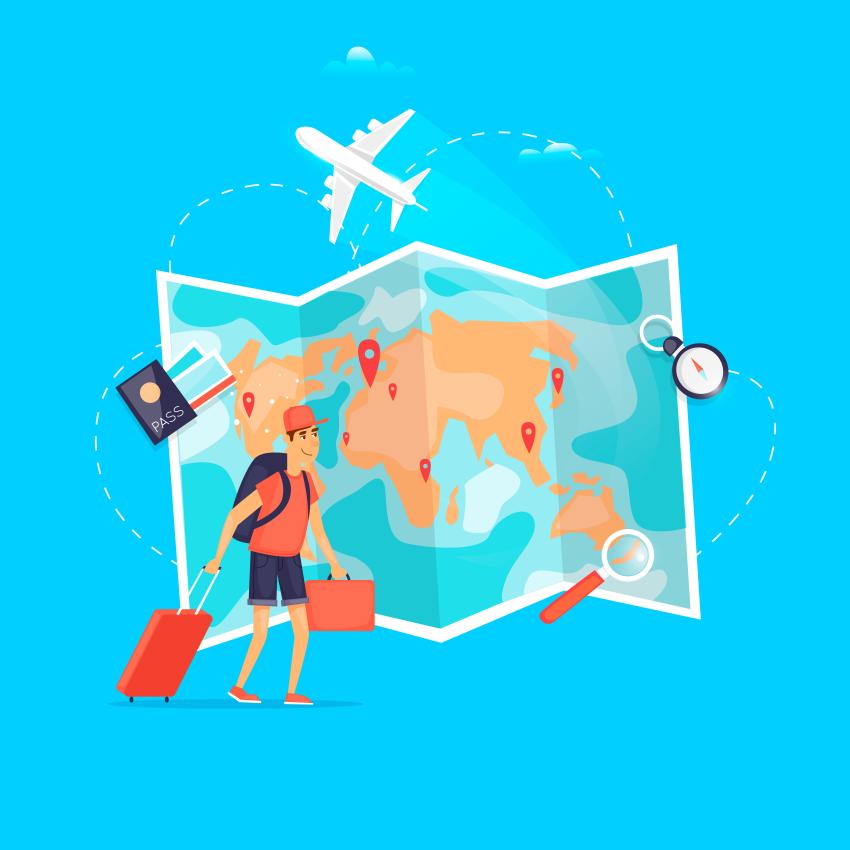Translation and tourism: how to communicate with your international clients

In the tourism sector, communication is the key to success. Attracting international visitors not only requires an enticing offer but also the ability to communicate effectively in their languages. Therefore, translation plays an essential role in overcoming language barriers and enhancing the customer experience. Here we explain how professional translation companies help tourism professionals communicate better with their international clients, with concrete examples to illustrate their strategies.
Índice de contenidos
Index of contents
Index du contenu
Inhaltsverzeichnis
Indice dei contenuti
The importance of tourism translation
1. Attracting a diverse audience
Tourism is a global industry, with clients coming from all corners of the world. To attract a diverse audience, it is crucial to provide information in many different languages. This includes websites, brochures, mobile apps and travel guides.
Example: TripAdvisor offers its website in 28 languages, allowing users to read reviews, compare hotel prices, book tours and find restaurants in their native language. In addition to translating user reviews, TripAdvisor translates descriptions on commercial establishments and information about destinations, making it easier for millions of travellers worldwide to plan their trips.
2. Improving the customer experience
Visitors feel more comfortable and better treated when they can access information in their native language. Clear and understandable communication of tourist information avoids misunderstandings and improves customer satisfaction, encouraging them to return and recommend the services used.
Example: Disneyland Paris attracts visitors from all over the world and offers brochures, maps, mobile apps and signs in English, Spanish, German, Italian, Dutch and many other languages. Shows and attractions are also often available in several languages to meet the expectations of international visitors.
3. Increasing bookings and sales
Better communication directly translates into more bookings and sales. When customers fully understand the offers, services and conditions, they are more likely to make an informed decision when purchasing.
Example: Booking.com, one of the largest online travel agencies, has its website translated into 43 languages. In addition to translating hotel descriptions and customer reviews, it has a multilingual customer service team that is available 24/7 by phone, email and chat. This allows customers to receive support in their own language, enhancing their booking and travel experience.
The challenges of tourism translation
1. Diversity of languages and cultures
The biggest challenge of tourism translation lies in the linguistic and cultural diversity of the clients. It is not enough to translate literally; messages must be adapted to be culturally relevant and appealing to all target audiences.
2. Volume of content
The tourism sector generates an enormous amount of content, such as hotel descriptions, travel guides and restaurant menus. Accurately translating all this content and using consistent terminology requires good resources and effective organisation.
3. Frequent updates
Tourist information changes frequently, whether it be new attractions, seasonal promotions or changes in travel regulations. Therefore, translations must be updated periodically to remain relevant.
Strategies for effective tourism translation
1. Hiring professional translators
Working with professional translators specialised in the tourism sector ensures accurate and appealing translations. These experts understand cultural nuances and know how to adapt messages to maximise their impact. In this regard, translation companies play a crucial role, as they work with translators specialised in various fields.
2. Using translation tools
Computer-assisted translation (CAT) tools and translation project management software can speed up the process and optimise results. They efficiently manage large volumes of content all while maintaining terminological consistency. Thanks to these tools, translation agencies can offer enhanced language services for the tourism sector.
3. Creating high-quality multilingual content
More than just translating, it is important to create content that has an impact on the local audience. This includes the use of appropriate visuals, cultural references and adapted communication styles, especially on social media and websites.
4. Conducting tests and receiving feedback
Before launching a campaign or a translated website, it is a good idea to test the content with native speakers to get their feedback. This helps identify and correct errors or cultural missteps.
Conclusion
Translation is a key element for tourism professionals who wish to attract and satisfy an international clientele. By investing in high-quality translation services, with the help of specialised native translators who adopt multilingual communication strategies, companies can offer an optimal experience to their clients. This also allows them to increase their bookings and stand out in a globalised market. Speaking your clients' language means welcoming them anywhere in the world.
Other articles you may be interested in:

Emeline holds a Master's degree in Applied Foreign Languages, specialising in International Management and International Trade Techniques. She completed her end-of-studies internship at AbroadLink Translations and now works there as a sales and marketing assistant



Add new comment